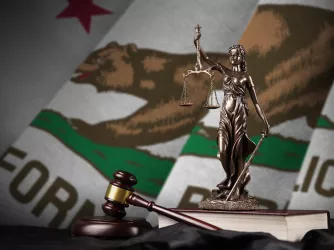Table of Contents
Freedom of the Press Overview
In the United States, the government may not prevent the publication of an article (print or electronic) even when there is reason to believe that such a publication would reveal information that will endanger our national security. By the same token, the government cannot:
- Pass a law that requires the media to publish information against its will.
- Impose criminal penalties, or civil damages, on the publication of truthful information about a matter of public concern or even on the dissemination of false and damaging information about a public person except in rare instances.
- Impose taxes on the press that it does not levy on other businesses.
- Compel journalists to reveal, in many circumstances, the identities of their sources.
- Prohibit the press from attending judicial proceedings and thereafter informing the public about them.
Collectively, this bundle of rights, largely developed by U.S. Supreme Court decisions, defines the “freedom of the press” guaranteed by the First Amendment. What we mean by the freedom of the press is, in fact, an evolving concept. It is a concept that is informed by the perceptions of those who crafted the press clause in an era of pamphlets, political tracts and periodical newspapers, and by the views of Supreme Court justices who have interpreted that clause over the past two centuries in a world of daily newspapers, books, magazines, motion pictures, radio and television broadcasts, and internet content.
The framers’ conception of freedom of the press has been the subject of intense historical debate, both among scholars and in the pages of judicial opinions. (Compare, e.g., First National Bank of Boston v. Bellotti (1978) with Potter Stewart, “Or of the Press”; see also Leonard Levy, “Emergence of a Free Press”.) At the very least, those who drafted and ratified the Bill of Rights purported to embrace the notion, derived from William Blackstone, that a free press may not be licensed by the sovereign, or otherwise restrained in advance of publication (see New York Times Co. v. United States, 1971.) And, although the subject remains a lively topic of academic debate, the Supreme Court itself reviewed the historical record in 1964 in New York Times Co. v. Sullivan and concluded that the “central meaning of the First Amendment” embraces a rejection of the law of seditious libel—i.e., the power of the sovereign to impose subsequent punishments, from imprisonment to criminal fines to civil damages, on those who criticize the state and its officials.
Press Freedom: Modern Developments
To a great extent, however, what we mean by freedom of the press today was shaped in an extraordinary era of Supreme Court decision making that began with Sullivan in 1964 and concluded in 1991 with Cohen v. Cowles Media Co. During that remarkable period, the Court ruled in at least 40 cases involving the press and fleshed out the skeleton of freedoms addressed only rarely in prior cases. In contrast, although the Court in the early part of the last century had considered the First Amendment claims of political dissidents with some frequency, it took nearly 150 years after the adoption of the Bill of Rights, and the First Amendment along with it, for the Court to issue its first decision based squarely on the freedom of the press.
That 1931 case, Near v. Minnesota, ratified the Blackstonian proposition that a prior restraint—a legal prohibition on the press’s ability to publish information in its possession—will almost always violate the First Amendment. Near is a landmark, not just because it was the Court’s first decision to invoke the press clause, but because it established a fundamental precept of constitutional law—that once the press has gotten its hands on information that it deems to be newsworthy, the government can seldom, if ever, prevent that information from being published.
There were a handful of press cases after Near and before Sullivan, and some of them are important. In 1936 in Grosjean v. American Press, for example, the Court established that governments may not impose taxes on a newspaper’s circulation, even when they are not directed (at least on their face) towards the content of any particular publication or at any specific publisher.
Sullivan, however, is, like Near, a landmark, not because the Court’s decision effectively saved The New York Times from financial ruin for reporting the truth about civil rights in the South, but because the Court deliberately seized the opportunity to expand the reach of the press clause itself. At its core, the Court explained in Sullivan, freedom of the press encompasses not just the right to be free from prior restraints on publication, but also to be largely exempt from any punishment when it reports the truth about matters of public concern—whether that punishment takes the form of imprisonment of a journalist, a criminal fine against a newspaper, or an award of civil damages to a defamation plaintiff. Indeed, when the subject of press scrutiny is a public official or a public figure, the Court held in Sullivan that even a false statement is protected by the First Amendment unless it is a “calculated falsehood”—a statement that a reporter or editor knows to be false or probably false and deliberately publishes anyway.
Over the course of the quarter-century following Sullivan, the Court made it its business to explore the ramifications of the case on a virtually annual basis. During that period, the Supreme Court’s elaboration of what we mean by a free press focused on the nature of the official restraint alleged to compromise that freedom as well as the extent to which the First Amendment protects the press from a given species of governmental action or inaction. Thus, in cases such as Near and the “Pentagon Papers” case (1971′s New York Times Co. v. United States), the Court established that freedom of the press from previous restraints on publication is nearly absolute, encompassing the right to publish information that a president concluded would harm the national security, if not the movements of troopships at sea in time of war. In 1974′s Miami Herald Publishing Co. v. Tornillo, the Court embraced the analogous proposition that the government has virtually no power to compel the press to publish that which it would prefer to leave on the proverbial “cutting room floor.”
In that regard, however, it must be noted that not all media is “created equal” when it comes to entitlement to the full protections of the First Amendment’s press clause. Most significantly, because of a perceived “scarcity” of the electromagnetic spectrum, the Court has held that Congress and the Federal Communications Commission may regulate the activities of broadcasters operating over “public” airwaves in a manner that would surely violate the First Amendment if applied to newspapers. (Compare Red Lion Broadcasting v. FCC, 1969, with Tornillo, 1974.)
The Court’s reasoning in Red Lion, in which it upheld the Commission’s “Fairness Doctrine” and “personal attack” rule—i.e., the right of a person criticized on a broadcast station to respond to such criticism over the same airwaves licensed to that station—has never been disavowed, although the justices have expressly declined to extend it to other, later-developed communications media, including cable television (Turner Broadcasting v. FCC 1994) and the Internet (Reno v. ACLU, 1997), to which the “scarcity” rationale for regulation is plainly inapplicable.
Even in the broadcast context, however, Sullivan and the cases that followed it stand for the proposition that the First Amendment protects the publication of truthful information about matters of public concern, not just from prior restraint, but also from subsequent punishment, at least in the absence of a demonstrated need to vindicate a competing government interest of the “highest order.” This formulation has come to be known as “the Daily Mail principle,” after the Supreme Court’s 1979 decision in Smith v. Daily Mail Publishing Co., in which the Court held that a newspaper could not be liable for publishing the name of a juvenile offender in violation of a West Virginia law declaring such information to be private. The protections against subsequent punishments for reporting the truth afforded by the Daily Mail principle are not absolute, but the barriers to such government regulation of the press are set extremely high.
The First Amendment & False Information
Sullivan and its progeny also hold that the First Amendment protects the publication of false information about matters of public concern in a variety of contexts, although with considerably less vigor than it does dissemination of the truth. Even so, public officials and public figures may not recover civil damages for injury to their reputations unless they were the victims of a reckless disregard for truth in the dissemination of a “calculated falsehood.” Indeed, private persons may not collect civil damages for reputational harm caused by falsehoods relating to a matter of public concern unless the publisher’s conduct violates a fault-based standard of care. And although expressions of “opinion” are not always immune from legal sanction, in its 1990 decision in Milkovich v. Lorain Journal Co., the Court held that statements not capable of being proven false, or which reasonable people would not construe as statements of fact at all, but rather as mere “rhetorical hyperbole,” are absolutely protected by the First Amendment.
By the same token, the Supreme Court has been considerably less definitive in articulating the degree of First Amendment protection to be afforded against restraints on the freedom of the press that are indirect and more subtle than the issuance of a prior restraint or the imposition of criminal or civil sanctions subsequent to publication. Thus, for example, in its 1978 decision Zurcher v. Stanford Daily, the Court held that the First Amendment does not protect the press and its newsrooms from the issuance of otherwise valid search warrants. Similarly, in 1979 in Herbert v. Lando, the Court concluded that the press clause does not encompass a privilege that would empower a journalist to decline to testify about the “editorial process” in civil discovery. Most significantly, in 1972 in Branzburg v. Hayes, a sharply divided Court was skeptical of the contention that the First Amendment protects journalists from the compelled disclosure of the identities of their confidential sources, at least in the context of a grand jury proceeding. The Court, however, has not addressed that issue in the 40 years since Branzburg, and has effectively permitted the lower courts to fashion an impressive body of law grounding just such a “reporter’s privilege” firmly in the press clause itself. That privilege, however, is by no means absolute and may be forfeited in a variety of circumstances, especially when no confidential source is thereby placed in jeopardy or when disclosure is sought in the context of a grand jury or other criminal proceeding.
And, finally, the Court has held that the First Amendment affords the press and public affirmative rights of access to at least some government proceedings. In a series of decisions beginning with 1980′s Richmond Newspapers, Inc. v. Virginia, the Court established that the First Amendment not only protects the press from prior restraints and other government imposed penalties, but also invests the press and public with a right to attend criminal trials and other judicial proceedings. This right, however, is not absolute and is routinely balanced against other competing interests articulated by the proponents of secret proceedings. Nevertheless, in such cases, and others like 1975′s Cox Broadcasting Corp. v. Cohn, the Court has expressly recognized the structural role that the press plays as a “surrogate” for the larger public in gathering and disseminating information on its behalf and for its benefit. Significantly, however, the Court has taken great pains not to anoint the press with First Amendment based rights and immunities beyond those enjoyed by any speaker, “lonely pamphleteer” (see Branzburg v. Hayes, 1972), or Internet chat-room participant.
Indeed, the Court has rejected arguments advanced by the institutional press that, because of its structural role in ensuring the free flow of information in a democratic society, it ought to enjoy unique protections from otherwise generally applicable laws that inhibit its ability to gather and report the news. Thus, in 1991 in Cohen v. Cowles Media Co., the Court effectively concluded the treatise on the freedom of the press it began in Sullivan; it did so when it emphasized that the press is properly subject to liability under the “generally applicable” law of contracts when it breaks a promise to keep a source’s identity confidential, even when it does so in order to report truthful information about the source’s involvement in a matter of public concern.
New Century of First Amendment Jurisprudence
In the decade following Cohen, the Court again fell largely silent when it came to the First Amendment’s application to the institutional press. As the 21st century dawned, however, the Court interrupted that silence, at least briefly, to revisit the extent to which a “generally applicable” law such as the federal wiretap statute can constitutionally impose criminal penalties and civil liability on the dissemination by the press of the contents of unlawfully recorded telephone conversations, at least when the information so disseminated is the truth about a matter of public concern.
In 2001 in Bartnicki v. Vopper, the Court held that, even when a statute is directed at deterring unlawful conduct (e.g., the interception of telephone conversations) and not at penalizing the content of press reports, it nevertheless constitutes a “naked prohibition” on the dissemination of information by the press that is “fairly characterized as a regulation of pure speech” in violation of the First Amendment. By holding, the Court ushered in a new century of First Amendment jurisprudence by reaffirming both the “Daily Mail principle”—the fundamental right of a free press to disseminate truthful information about public matters—and the “central meaning of the First Amendment” on which it is based—Sullivan’s recognition that the “freedom of expression upon public questions is secured by the First Amendment” so that “debate on public issues should be uninhibited, robust and wide-open.”
Recent Articles
FIRE’s award-winning Newsdesk covers the free speech news you need to stay informed.

FIRE to SCOTUS: TikTok ban violates Americans' First Amendment rights

California and other states are rushing to regulate AI. This is what they’re missing

One day after FIRE lawsuit, Congress passes changes to filming permits in national parks
